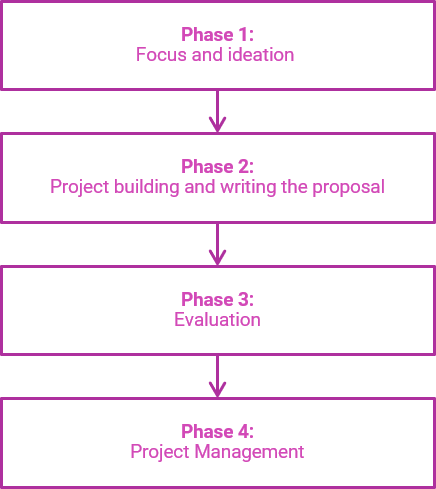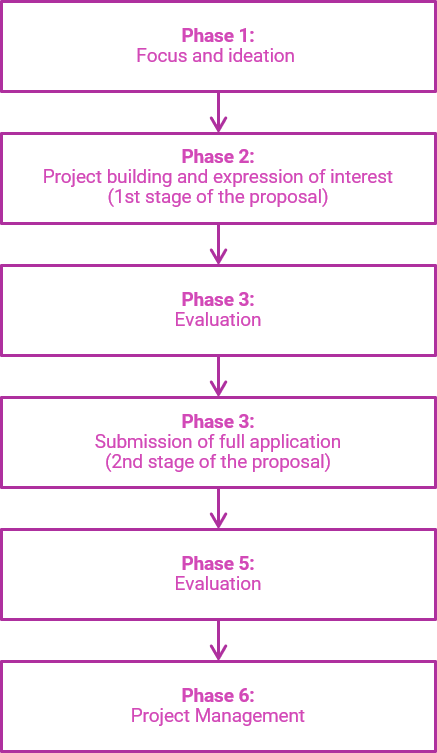Innovation Fund (small-scale)
- First define if you should apply for EU funding – and for what purpose
- Decide the scope: whether to maximise business growth or tailor your project to fit the funding
- Ensure that your plan fits the funding call.
Once you have made the decision, Phase 2 of the path is quite straight-forward even though it involves a lot of work.
This is your to-do list:
- Design a project concept
- Identify the best funding opportunities
- Understand the needed roles of partners (if you are planning to establish a consortium)
- Find partners (if you are planning to establish a consortium)
- Select a coordinator
- Set the targets
- Write your proposal (incl. Application, Feasibility Study, Business Plan, detailed calculation of GHG emission avoidance potential and detailed calculation of relevant costs, list of relevant recent projects, profiles of key personnel)
Project proposals are first evaluated against eligibility criteria and if the proposal fills the eligibility criteria, it will be evaluated against award criteria which are GHG emission avoidance, degree of innovation, project maturity, scalability and cost-efficiency. The given points for each criteria are between 0-5.
Now you are ready to start your project!
- First you need to have the kick-off meeting with the consortium (if you have one).
- The project can officially start only after the positive funding decision – but maybe the plan was so good that it is already half done?
Innovation Fund (large-scale)
- First define if you should apply for EU funding – and for what purpose
- Decide the scope: whether to maximise business growth or tailor your project to fit the funding
- Ensure that your plan fits the funding call
1st stage of the proposal
- Set and reset the scope of the project
- Build the consortium (if you are planning to implement the project within a consortium)
- Write your proposal (incl. Application, Feasibility Study, Business Plan and Implementation Plan, detailed calculation of GHG emission avoidance potential)
Project proposals are first evaluated against eligibility criteria and if the proposal fills the eligibility criteria, it will be evaluated against award criteria which are GHG emission avoidance, degree of innovation and project maturity.
If the project is among the best ones in the first stage i.e. “Expression of interest”, you are entitled to submit a more detailed project proposal in the second stage ie. “Full application”.
2nd stage of the proposal
- Write a more detailed proposal
- Provide a more detailed methodology for the calculation of the GHG emission avoidance
- Third-party verification of the GHG emission
calculation - Provide a detailed calculation of relevant costs
The award criteria in the second stage are GHG emission avoidance, degree of innovation, project maturity, scalability, and cost-efficiency
Now you are ready to start your project!
- First you need to have the kick-off meeting with the consortium (if you have one).
- The work can only start if you got a positive funding decision – but maybe your plan was so good that you will do a part of it anyway?

